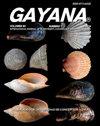智利南部沿海山脉河道内大木材的河段尺度生态影响
IF 0.2
4区 生物学
Q4 ZOOLOGY
引用次数: 8
摘要
在智利南部沿海山脉的三级河道中,以河段尺度评价了流内大木材(LW)的生态影响。经验证的假设是,粗颗粒有机物(CPOM)的保留率较高,底栖大型无脊椎动物在储存大量LW的通道中具有更大的多样性。3条低洼河段(平均低洼河段容积为8 m 3 100m -1河段长度);平面床形态)和三个低通量高通量河段(平均体积262 m 3 100m -1;在1557米长的研究水道段内选择了强迫池(河床形态)。CPOM滞留量是根据每条河段下游端收集的叶片数量与上游端引入的叶片数量的差异来推断的。低、高容积区平均cpm保留率分别为72%和90%,且与容积呈正相关(R = 0.61)。大无脊椎动物的多样性和丰度在中低-高体积河段均高于中低-低体积河段,丰富度是中低-低体积河段的2倍。低、低容量区间的Bray-Curtis相似指数低(40%),低、低容量区间的Bray-Curtis相似指数高(约60%)。结果证实了高LW体积河段的OM保留和底栖大型无脊椎动物多样性和丰度较高的假设。与LW积累相关的大型无脊椎动物的更高多样性和丰度证实,堵塞构成了提供住所和食物的生物群。这些结果可指导河流干预和修复工程的环境影响评价。这项研究是在Fondecyt 1110609项目的框架内进行的。本文章由计算机程序翻译,如有差异,请以英文原文为准。
Reach scale ecologic influence of in-stream large wood in a Coastal Mountain range channel, Southern Chile
The ecologic infl uence of in-stream large wood (LW) was evaluated at reach scale in a third-order channel located in the Coastal Mountain Range, southern Chile. The tested hypotheses were that Coarse Particle Organic Matter (CPOM) retention is higher and benthic macro-invertebrates are more diverse in channel reaches storing higher volumes of LW. Three LW-low-volume reaches (mean LW volume of 8 m 3 100m -1 of reach channel length; plane bed morphology) and three LW-high-volume reaches (mean volume 262 m 3 100m -1 ; forced pool riffl e bed morphology) were selected within a 1557 m-long segment of the study channel. CPOM retention was inferred from the difference between the number of leaves collected in the downstream end of each reach and the leaves introduced in the upstream end. Mean CPOM retention was 72 and 90% among LW-low and high volume reaches, and showed a positive correlation (R = 0.61) with LW volume. Macro-invertebrates were more diverse and abundant in LW-high-volume reaches and the richness was twice than in LW-low-volume reaches. Bray-Curtis similarity index was low (40%) between LW-high and low volume reaches, while it was high (> 60%) among LW-low-volume reaches. Results confi rm the hypothesis that OM retention and benthic macro-invertebrate diversity and abundance were higher in high LW volume reaches. The higher diversity and abundance of macro-invertebrates associated with LW accumulations confi rm that logjams constitute a biotope that offers shelter and food. These results can guide the assessment of environmental impacts of stream intervention and restoration projects. The study was undertaken within the framework of Project Fondecyt 1110609.
求助全文
通过发布文献求助,成功后即可免费获取论文全文。
去求助
来源期刊

GAYANA
Agricultural and Biological Sciences-Aquatic Science
CiteScore
0.60
自引率
0.00%
发文量
5
期刊介绍:
GAYANA is a scientific journal published by Universidad de Concepción, Chile. It is the modern version of Gayana Oceanología and Gayana Zoología. Therefore its numeration starts at volume 63(1).
GAYANA covers all aspects of zoology and oceanographic research. It is structured in five sections, defined by subject or discipline: Ecology, Biodiversity and Taxonomy, Earth Sciences, Evolutionary, and Applied Biology and Environmental Biology. Each section is in charge of an editor who receives and manages the manuscripts sent for evaluation in close collaboration with the editorial board.
 求助内容:
求助内容: 应助结果提醒方式:
应助结果提醒方式:


